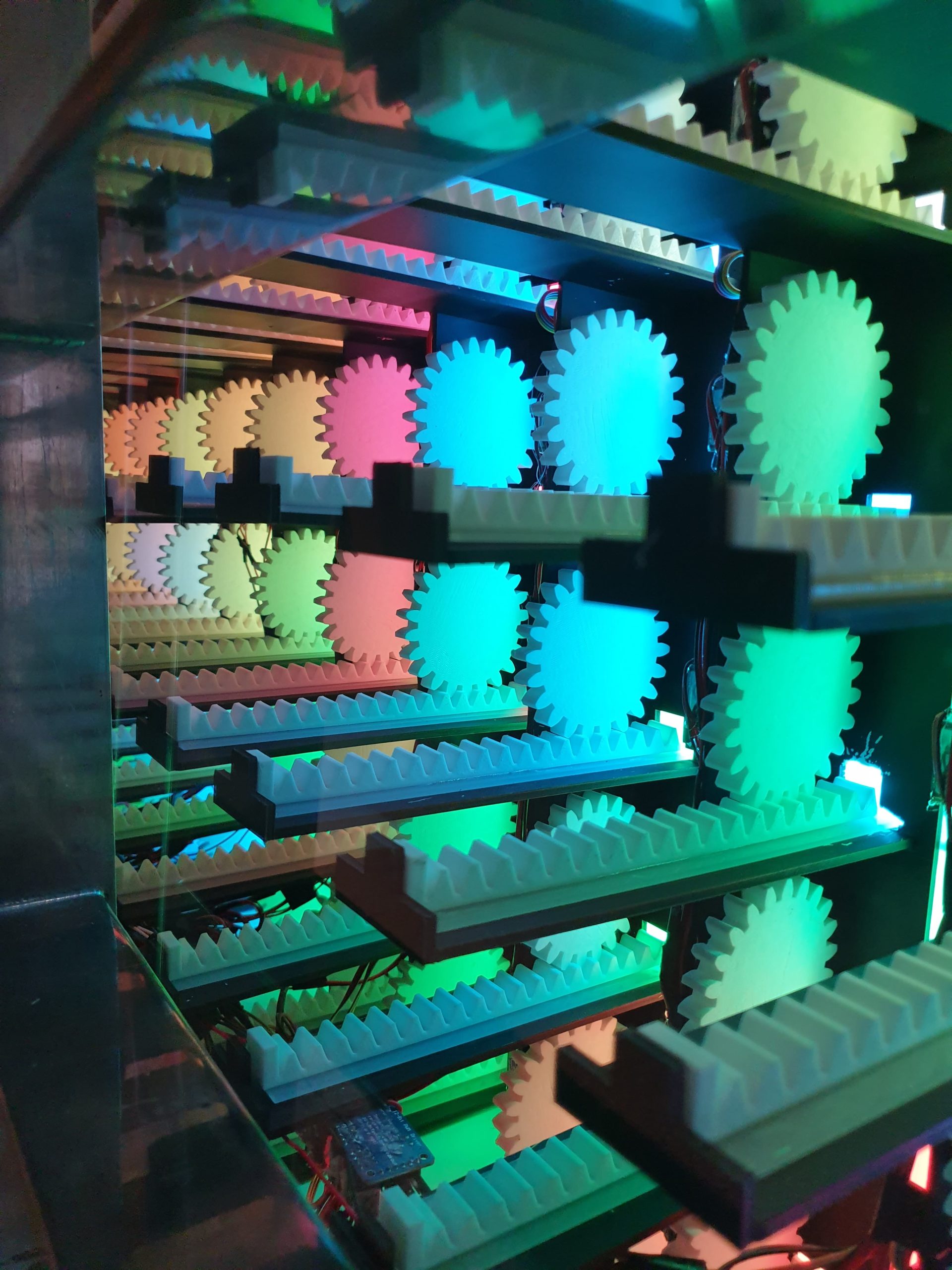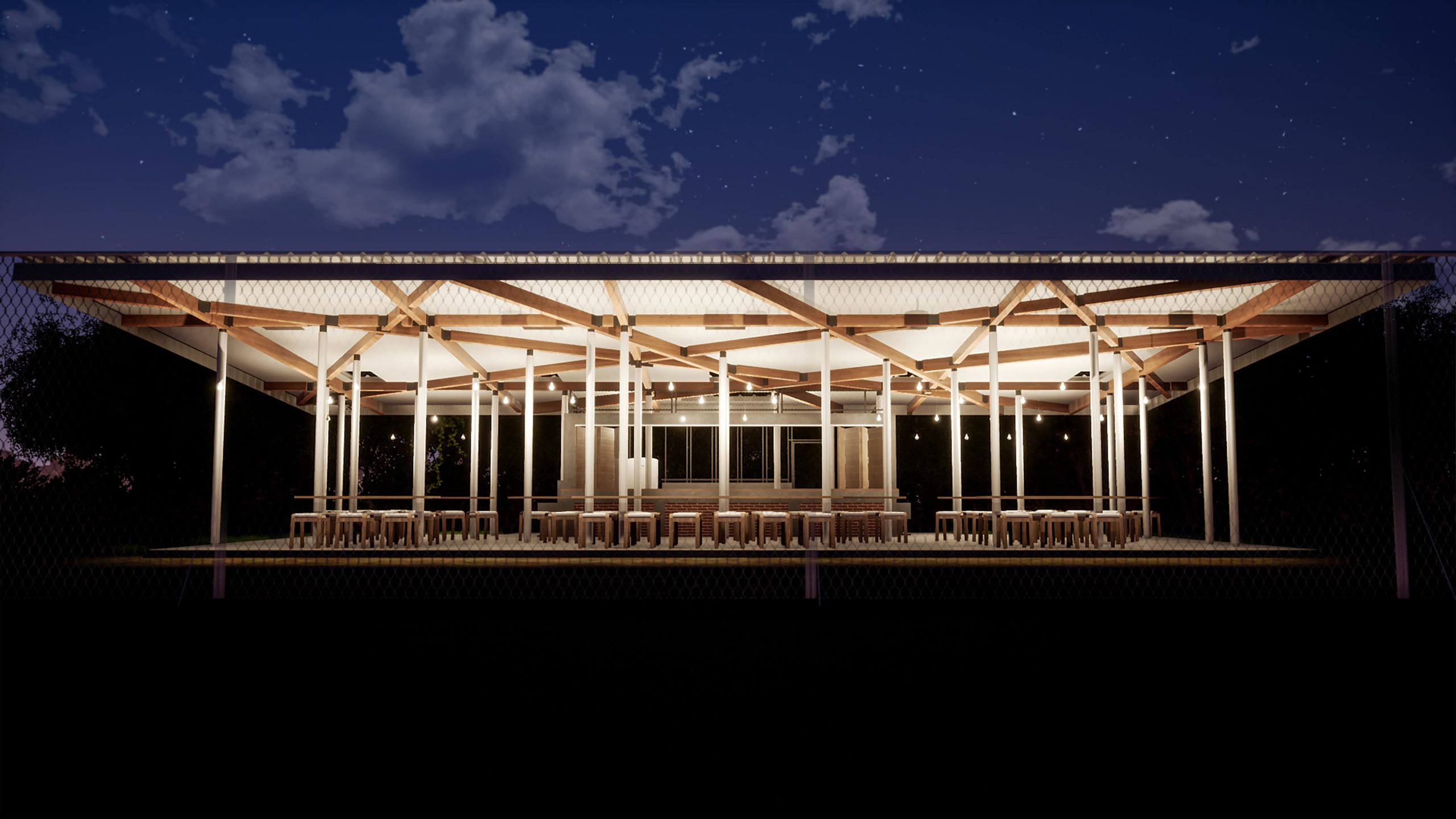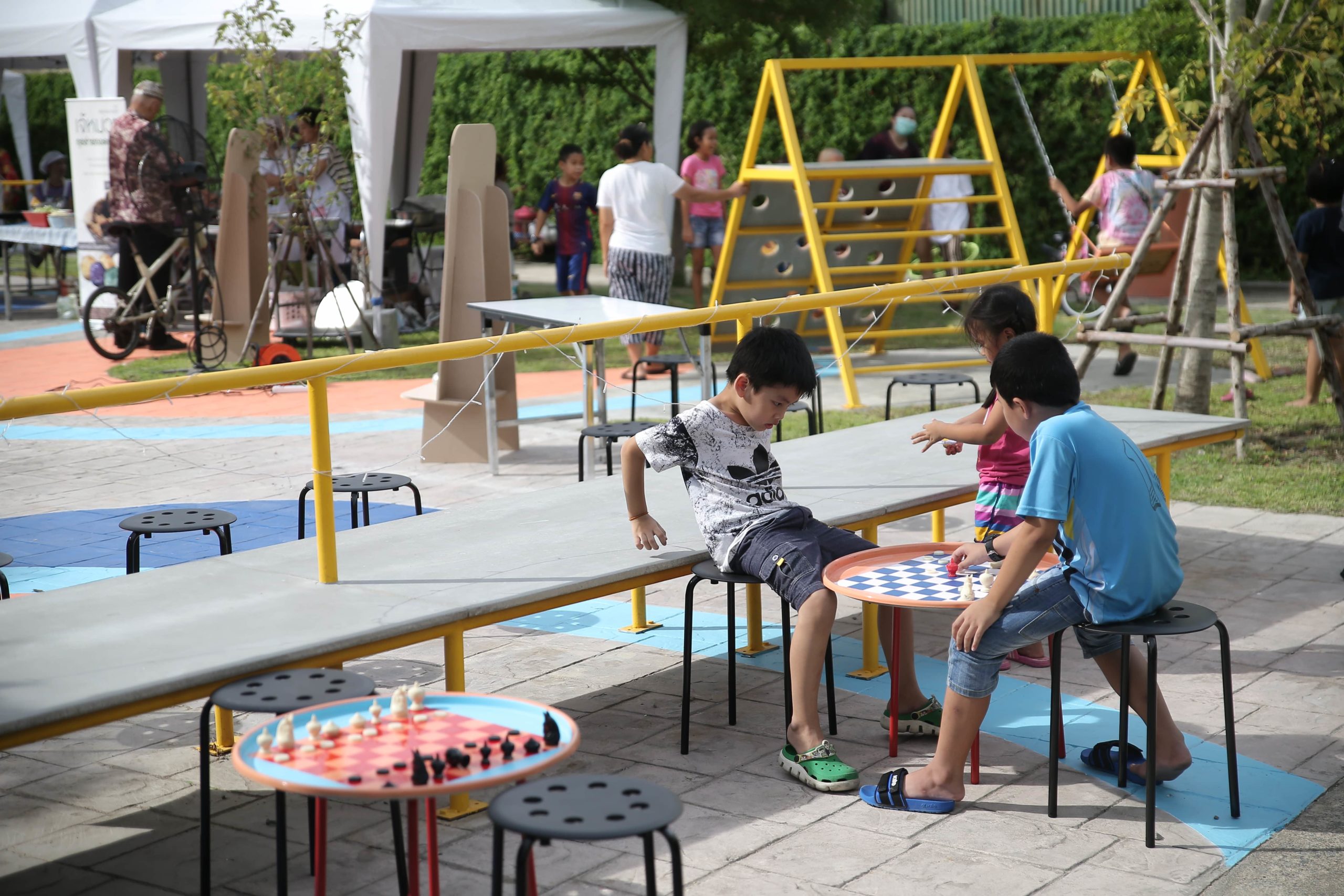During the COVID-19 pandemic, we have experienced more physical isolation due to daily online activities such as Zoom meetings, Google Meet lectures, online exams, and digital submissions. After the pandemic, our social lives may change forever with limited social encounters and gatherings only reserved for special occasions. This may lead to less social interaction and fewer chance encounters which are valuable for a tightly-knit group such as the Faculty of Architecture where students spend most of their time together. Inspired by the giant Ghibli clock in Tokyo, the Performative Clock serves as one of the must-see attractions at Chulalongkorn University, and it attempts to reconnect the community through carefully orchestrated performances that attract the attention of the wider public.

Surapong Lertsithichai
MakerAsia
Pannathorn Amnuaychokhirun
Weerada Chalermnont
Aria Ekasilapa
Ramita Keeratiurai
Praeploy Phaewpisakul
Benyapa Piboolvitayakul
Paranyu Tempattarachoke
Aticha Thanadirak
Anchalika Thepnumsommanus
Poranon Thitaparun
Related Projects:

Ban Huai Mae Bon School
A new refectory and multi-purpose space for the Ban Huai Mae Bon school replaces a dilapidated canteen and provides a safe and hygienic dining space while also offering a space for other assemblies and teaching activities. Students developed the overall design and details with the school community, making a series of presentations to the students and teachers. They also managed the costs of the project by coordinating with contractors and suppliers, helped raise additional funds, scheduled the construction process, and aided in building the space under the guidance of a contractor and instructors.

Ephemeral Events
This design-build project focused on the production of a single pop-up event held in the Nang Loeng district. Students became both designers and organizers, curating a public event and the infrastructure needed to support that event, such as urban furniture, market stalls, public amenities, and artist installations. During the development of the project, students conducted a series of community engagement meetings and mapping workshops, understanding the identity and values embedded in the neighborhood. Taking on the role of festival organizers, the students independently coordinated the design and promotion of media content, met with the district office and police to establish site permissions, and prepared the site for all of its potential infrastructural needs. Throughout the month-long process, students worked directly with community leaders, market vendors, arts and crafts specialists, and local cultural hubs to curate a series of interactive workshops, where the public was invited to learn about the identity of Nang Loeng through participatory events. These workshops included desserts made from banana leaves, sewing methods with Ban Narasilp, dancing workshops with Khon performers and ballroom instructors, Thai chess instructions with local champions, and other food-related crafts. During the opening, the public was invited to participate in a live “memory wall” where responses to a series of questions on the past, present, and future of Nang Loeng were displayed for collective reflection.
